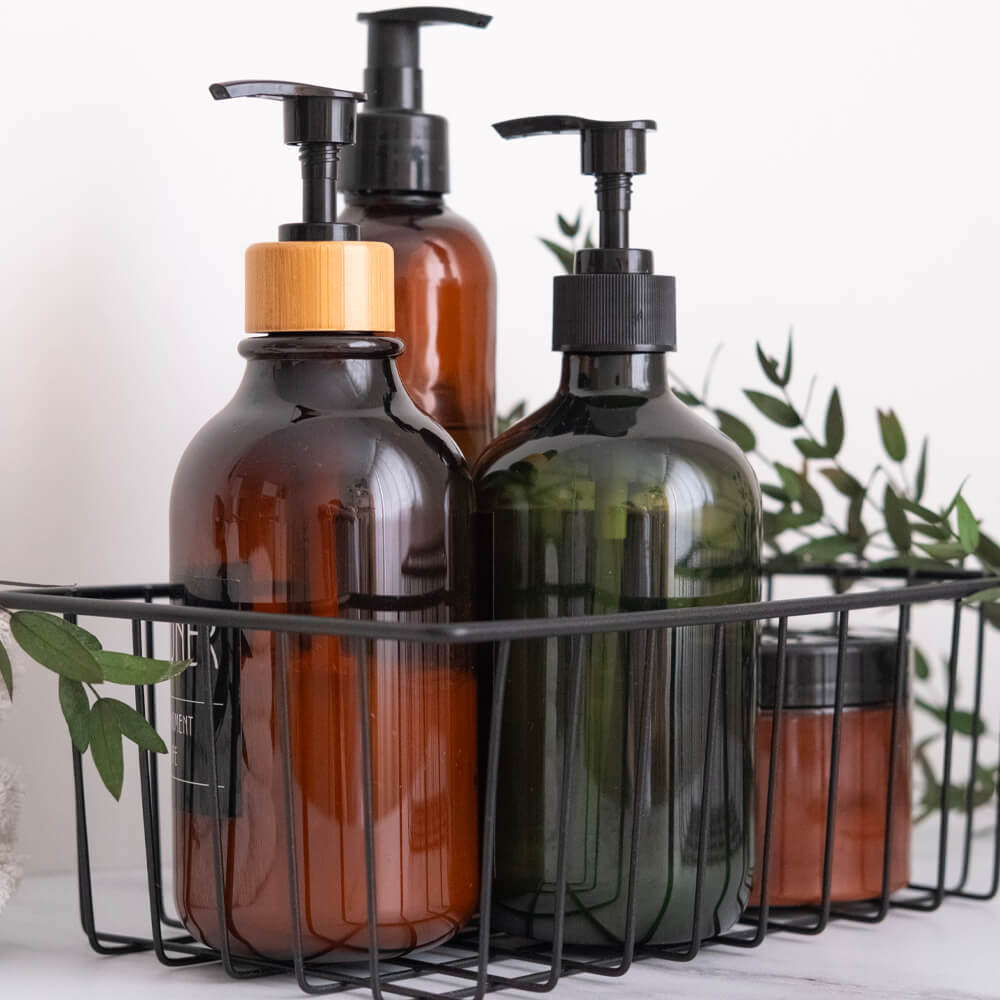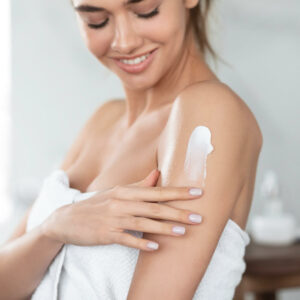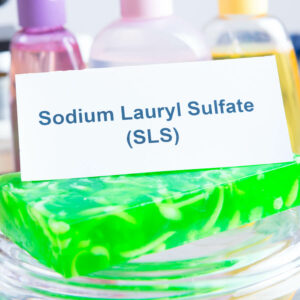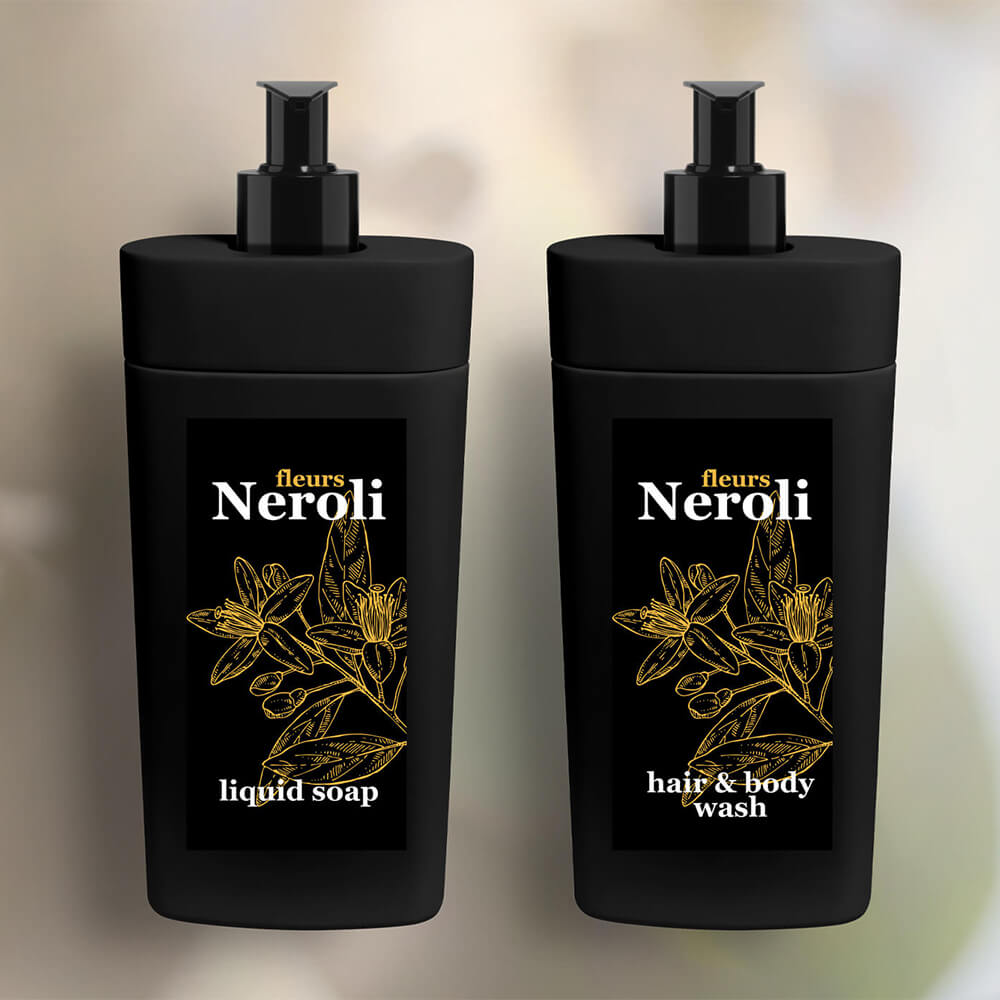
As its name indicates, the dispenser is used to dispense the cosmetic product making it easier to use the product ensuring its safety and safeguarding its properties. Shampoo, conditioners, bath gels, hair and body wash and liquid soaps are generally the most commonly used products in dispensers for hotels.
Designed in America in the 1980s, this device was hailed as an immediate success by the public and on the market, both for home use and above all, in public and hotel facilities.
Today, more and more hotels are choosing to use dispensers instead of traditional mini-packs. Dispensers are much more environmentally friendly because they hold a lot more product, avoid waste and are generally a more sustainable choice, i.e. less volume, less cost and transport, less pollution, less plastic, less storage and less waste disposal.
In addition, choosing to use only 100% recyclable plastic, as in Albogroup’s dispensers, lies at the heart of all sustainable choices.
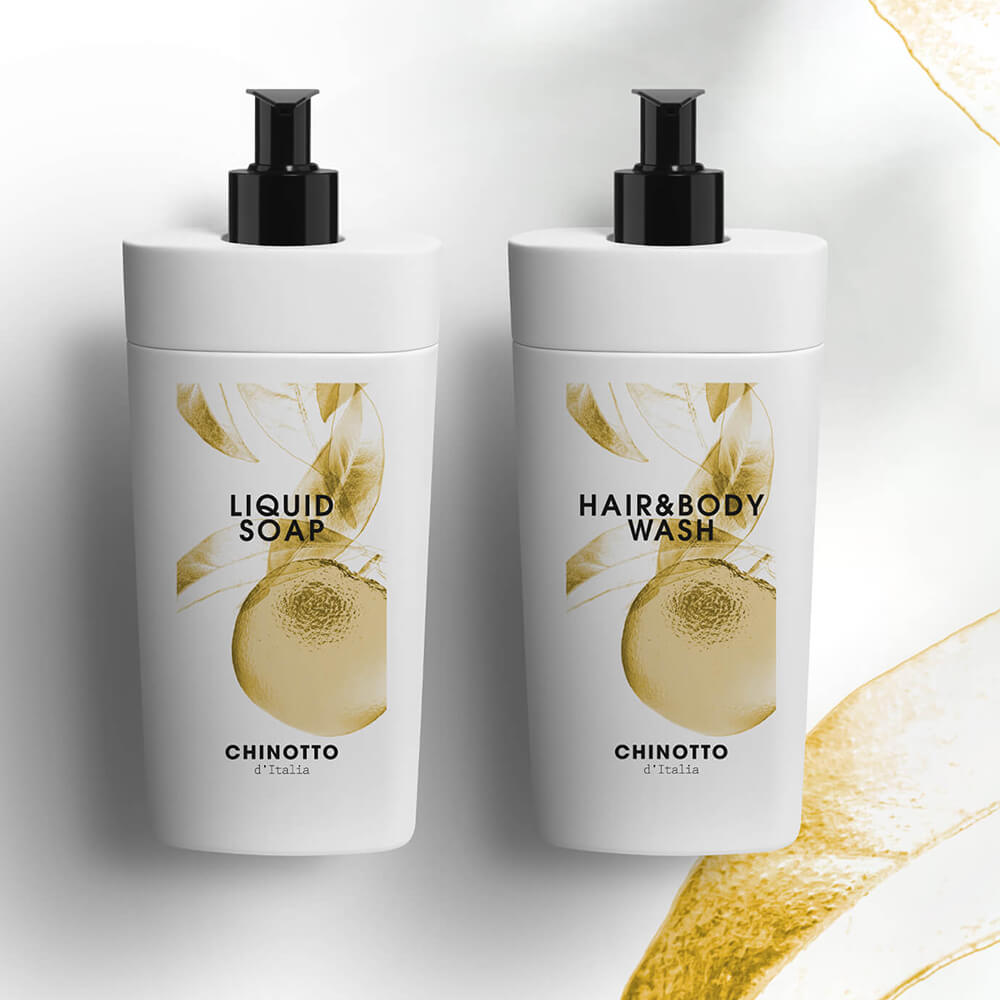
Luxury hotel dispensers: the future
Hotel dispensers must always comply with safety regulations and be easy to use, even by children and people with disabilities.
In the vast majority of cases, these accessories are attached to the wall for convenient and easy use.
Moreover, especially in luxury hotels, meticulous attention is paid to their design which is carefully adapted to the furnishing because rooms are now also seen as places to take care of personal well-being.
The option of replacing mini packs (which are costly and time-consuming for the cleaning staff to replace every day) with wall-mounted dispensers that guarantee long-term use as well as excellent features, is without doubt a strong point in the hospitality facilities.
Luxury hotels increasingly opt for liquid soap dispensers, the choice of which can also be decided by the customer on the basis of a wide range of available proposals.
These accessories, therefore, represent the future in the amenities sector of hotels of all categories, but especially five-star hotels , where every detail is studied with the utmost care, in order to meet customer expectations and thus improve customer satisfaction.
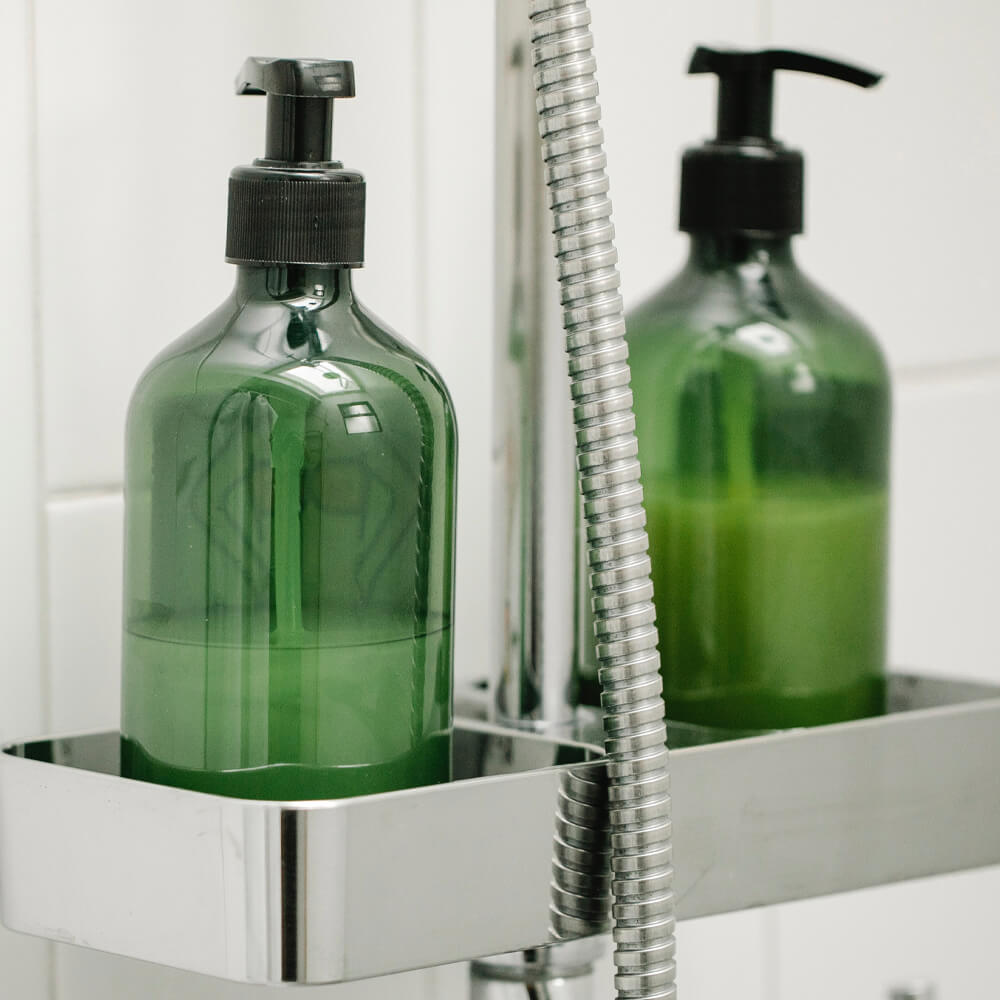
Benefits of the dispenser
Dispensers were created following the development of this new detergent, the benefits of which are:
- convenient to use with a simple press of the pump to dispense a specific amount of liquid soap;
- ease of use, making these accessories the best choice even for children, the elderly and people with disabilities;
- maximum safety from the point of view of hygiene, as the product is enclosed in a sealed container;
- cost savings as only the amount of product needed for washing hands is dispensed;
- lower environmental impact as a result of cutting down on raw materials and thus on pollutants emitted in the environment;
- improved handling by cleaning staff, which can speed up bathroom preparation time;
- easy to replace on wall mounts (fixed);
- clear view of the content so the devices can be switched only when required.
Thanks to all of these undeniable advantages, an increasing number of luxury hotels are turning to liquid soap dispensers, which, among other things, help to enhance the visual appeal of the rooms through their custom style and refined elegance.
According to Albogroupitaly.com, a company dedicated to top quality in luxury hotel bathroom accessories, dispensers are set to become increasingly popular.
Contact us for more information
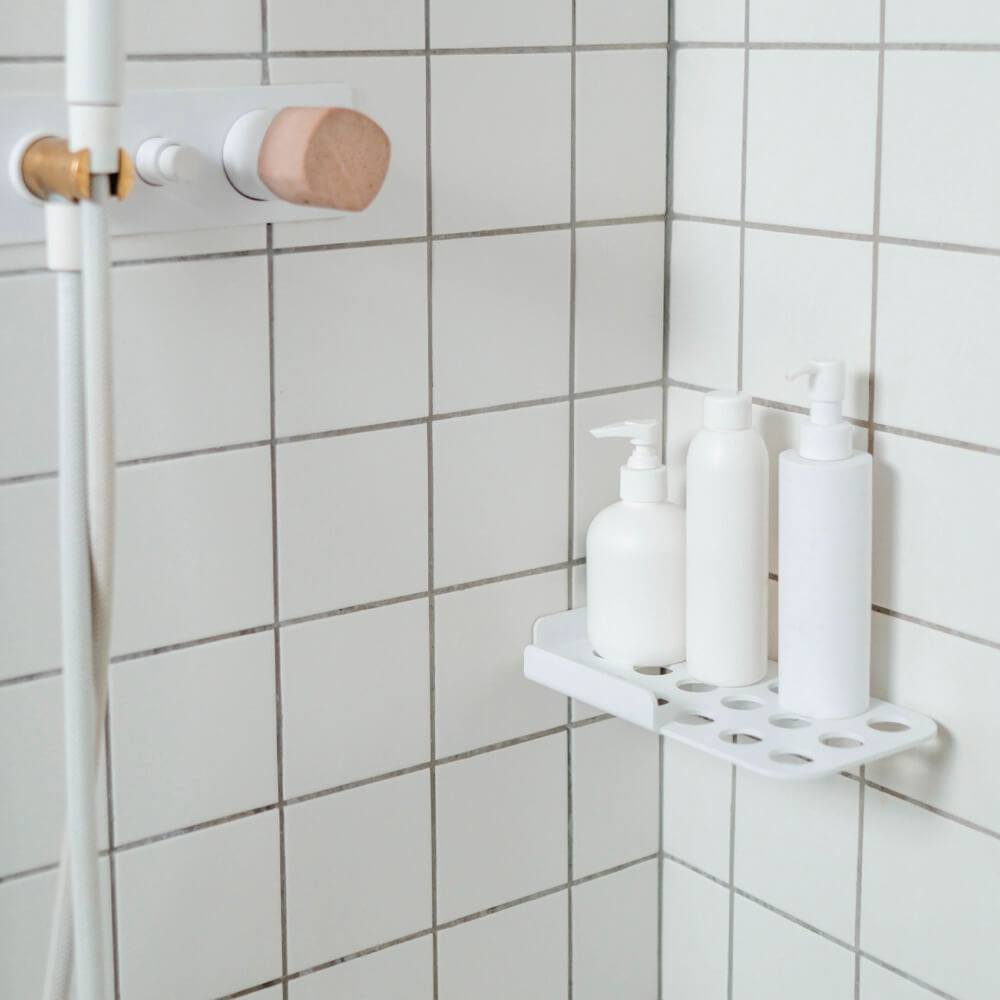
Can a dispenser become a designer object?
There are well-known designer objects that have revolutionized home décor since the late 19th century. Thanks to the advent of the Bauhaus movement in the 1920s, heralding a real boom in designer objects, intended not only for the upper classes of society, but also for a wider and more diverse audience who began to appreciate aesthetics. An evolution that reached its peak with a real creative explosion in the 1960s.
Objects that have become icons dominated these years and have forever transformed rooms from the kitchen to the living room, with a new approach to functionality more in touch with modern needs and tastes. Homes, after all, have become much smaller over the past century, and furniture and accessories have adapted to our modern hectic life style.
Some of the most popular designer objects include:
- The Bialetti Moka coffee pot, by Alfonso Bialetti, with an Art Deco design
- The Tulip Chair, rightly makes the list, created by Eero Saarinen
- The Arco Flos lamp, by the creative duo, Achille & Pier Giacomo Castiglioni
- The Wassily chair designed by the Hungarian architect and designer, Marcel Breuer
- Le Creuset, perhaps the most famous cooking pot in the world
- The LC4 chaise-longue designed by Le Corbusier
- The Barcelona chair created in 1929 for the Barcelona International Exhibition
- The Anglepoise lamp designed by car designer, George Carwardine.
Thanks to this innovative creative energy that spanned the entire 20th century, we are now used to viewing objects not just for their specific function, but also as stand-alone objects, each with its own harmony, colours and shape.
Even a simple object such as a hotel dispenser requires a complex creative design process to turn a simple device into a modern designer element that blends seamless and elegantly into the décor of a hotel bathroom. Consequently, Albogroup has developed unique shapes for its dispensers that allow maximum customisation of the product in specific collections. You can find out more about the Albogroup dispenser collections here.
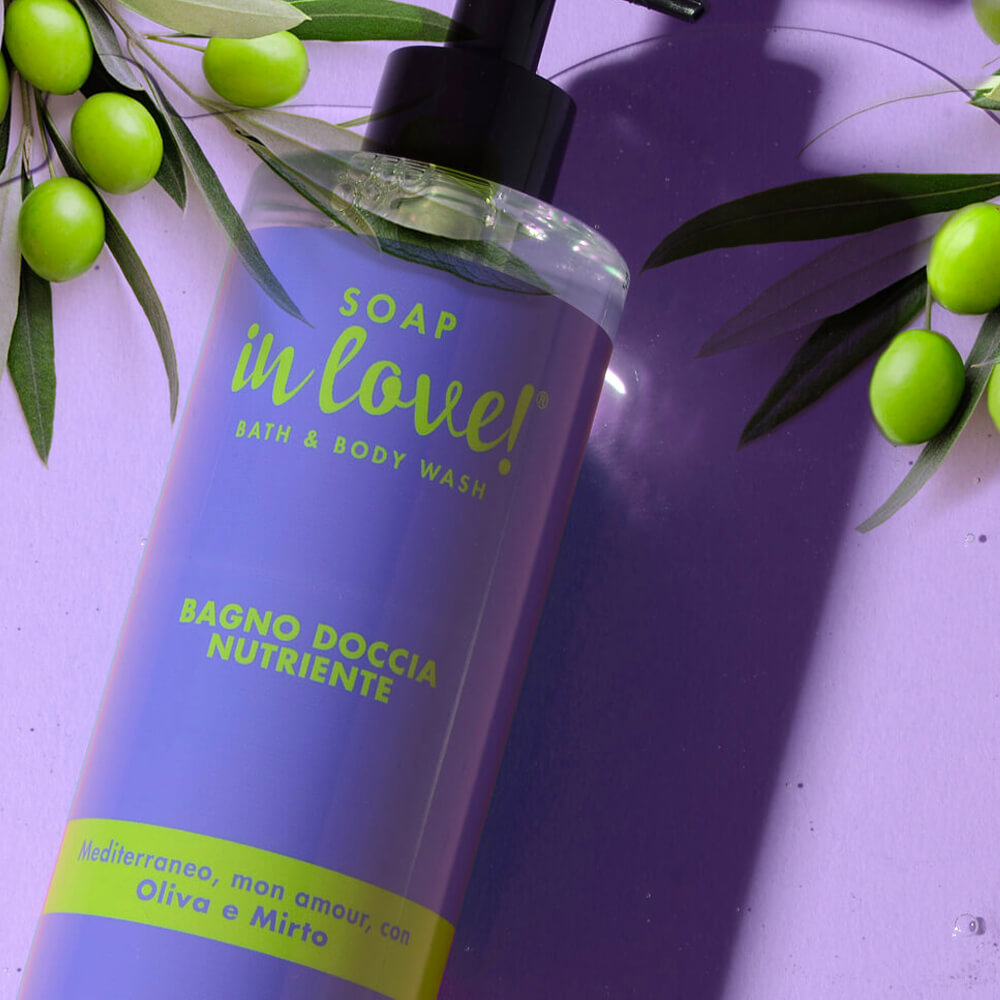
How much can be saved by using liquid soap dispensers?
In addition to being accurately dosed and, therefore, avoiding wasted product, liquid soap also does not require much water, thus helping to save on consumption.
Thanks to its well-balanced and sanitising formulation, this cleanser eliminates bacteria and keeps skin smooth, moisturised and nourished.
When choosing dispensers, which are essential accessories for using liquid soap, there are a number of things that need to be considered, which can result in significant savings.
Dispenser design
The shape of the dispenser is usually cylindrical with a pump or dosing cap for dispensing the product.
The more traditional models, which are pressured, feature a container in which the pump is submerged to release soap after the dispenser is pressed.
While household models can be placed on the sink, the versions for hotels, B&B, office and public spaces are mounted on the wall.
Dispenser capacity
This is the defining feature of dispensers as it relates to the amount of liquid soap that can be contained in the bottle and is measured in millilitres.
The greater the capacity of the dispenser, the longer it will last. When it is finished, you simply replace the container by inserting it into its holder.
Product life
The quality requirements of the materials used o produce the dispenser affect not only its strength, but also its durability, which must remain unchanged for as long as it contains the soap.
Liquid soap type
Always check that the dispenser is capable of dispensing different types of liquid soap or other cosmetics most commonly used by consumers.
Dispensing method
Dispensers can dispense manually (by being pressed) or automatically (via sensors); the latter is designed to avoid any contact with the dispenser.
It is always advisable to choose good quality dispensers, which are easily replaced, with a simple dispensing system and, above all, made from environmentally friendly materials such as Albogroup dispensers which are made from 100% recyclable plastic.
Although different situations affect the overall costs, the use of dispensers is generally considered to result in significant product savings.
For more information on the specific features of Albogroup’s hotel dispensers, visit the Design Collection, technical page directly or choose from the many dispenser collections available.
